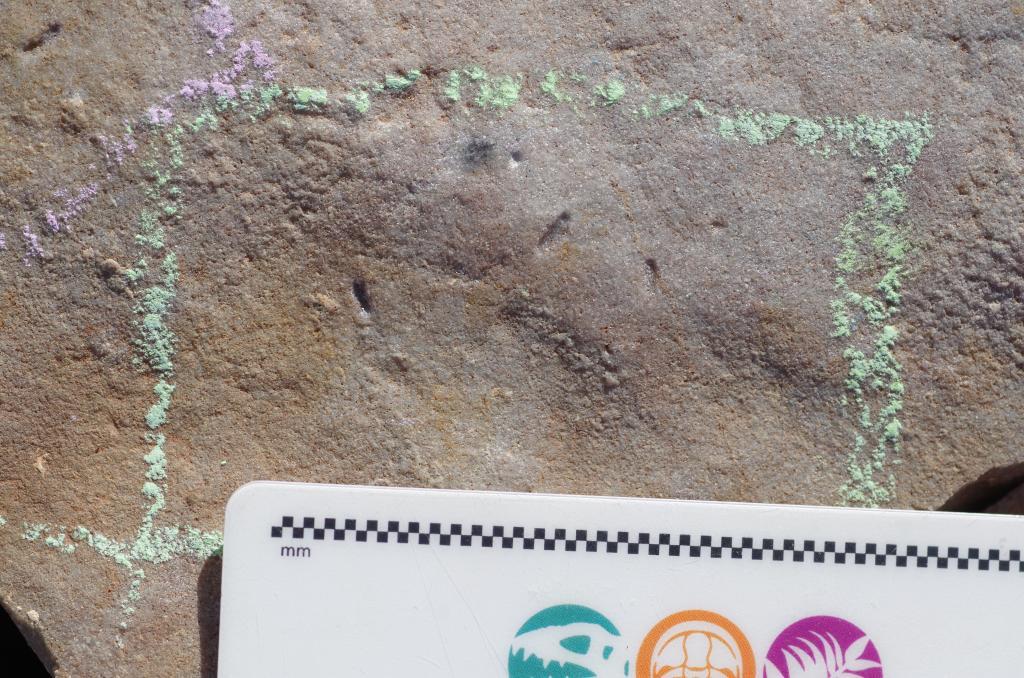- Paleontology: The new cradle of the 'wonderful life' of 500 million years ago
- Paleontology: the fossil of the first modern bird illuminates the past of birds
In 1860, months after the publication of The Origin of Species , a great debate was organized at the University of Oxford. Scientists, philosophers and theologians participated. They say that, in one of his speeches, the Bishop of Oxford, Samuel Wilberforce, asked one of Darwin's main defenders, Thomas Henry Huxley, with disdain: "Is it from your grandfather or grandmother that you descend from the monkey ? " To which Huxley would have replied that he was not ashamed of having a monkey as an ancestor, but that he would be ashamed "to be related to a man who dedicated his talent to hiding the truth."
Wilberforce might have been even more shocked to hear that at the origin of the family tree for all animals, including humans, there is not a monkey, but a worm . A team of geologists from the University of California at Riverside have discovered the footprints of the first organism with bilateral symmetry, which lived 555 million years ago. It is the first creature whose body had a front and a back, two symmetrical sides and openings at each end, connected by a small intestine. Found in South Australia and named Ikaria wariootia , the description of this ancestral being is published this Monday in the PNAS magazine.
The appearance of symmetrical bodies marks a key moment in the evolution of life on Earth. It allowed the definition of a body axis, organized in the direction in which the organism moved, and with it gave rise to the formation of a central nervous system. In recent decades, scientists have identified some fossilized footprints corresponding to the Ediacaric period (635-539 million years) in the rock deposits of Nilpena, in southern Australia. And they suspected that these marks could be vestiges of those pioneering creatures, without being able to prove it by the absence of organic material.
"Rocks from this period in South Australia have been studied for more than 70 years, so the area is well known, says University of California researcher Mary Droser." But the more we look, the more new things we tend to find. Along with his colleague Scott Evans, Droser discovered tiny, oval prints near some of those burrows. "The use of 3D laser scanner technology, accomplished with the help of a grant from the NASA exobiology department, was the key, "he explains." It allowed us to recognize that these little fossils were, in fact, bilaterian. "
The analysis revealed that the impression had been left by a body of regular and cylindrical shape, with head and tail, and with a ringed musculature. This specimen of Ikaria wariootia measured between two and seven millimeters in length and between one and two and a half millimeters in width. Its maximum width was that of a grain of rice. The researchers chose the name Ikaria wariootia as a tribute to the island's first inhabitants: the name Ikaria means "meeting place" in the language of the Adnyamathanha aborigines, and Warioota Creek refers to a mountainous formation leading to Nilpena.
Sensory capacity
They are the oldest traces of an animal with motor capacity from the Ediacaric, an honor that until now corresponded to a similar life form found in China last year, Yilingia spiciformis . " Yilingia is five to 15 million years younger than our fossil," says Droser, "but they were both bi -terian, so there sure is a relationship between the two."
Despite its relatively simple shape, Ikaria was complex compared to other fossils from this period. He left footprints digging in fine layers of sand from the ocean floor - areas where oxygen would be abundant - while looking for organic matter, indicating some sensory capacity. Also, the impressions left by this being retain v-shaped ridges, suggesting that it moved by contracting the muscles of its body, like an earthworm (peristaltic locomotion) . The displacement of the sediments and the signs that the organism was feeding on buried organic matter suggest that Ikaria probably had a mouth, anus and intestines.
Primal life
Although the first life forms on the planet appeared a long time ago (about 4 billion years ago), they were small microbes. The first complex multicellular organisms would not reach the Ediacaric (635-539 million years), but it is believed that most of them are not related to current living beings. Creatures such as Dickinsonia , a strange oval-shaped being that lacks the basic characteristics of most animals, such as the mouth or the digestive system.
Evolutionary biologists had already pointed out, based on genetic models, that the oldest ancestor of all the bilaterians must have been simple and small, with rudimentary sense organs. But finding and identifying the remains of a being that inhabited the sea floor more than 500 million years ago was unlikely, if not impossible. " What we have found is exactly what biologists had predicted, " says Droser. "Dickinsonia and other big things were probably evolutionary dead ends, but we knew that there were a lot of little beings in that period and we believe that among them are these early Bilhaterians."
According to the criteria of The Trust Project
Know more- science
- Science and health
ITALYGiuseppe Conte: "We live in the most risky moment, there are still hard weeks"
Astronomy What happens to the star Betelgeuse?
Paleontology The varied 'toolbox' used by 'Homo erectus' over a million years ago

